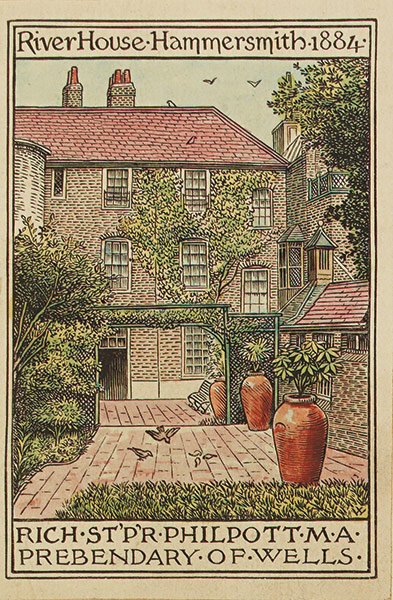
Hooper made this bookplate from an ink drawing given to him by the illustrator Edmund Hort New. Philpott was the prebendary of Wells and rural dean of the Midsomer Norton division of the Frome deanery. The date 1884 probably refers to the year Philpott bought his house in Hammersmith Photograph: Trustees of the British Museum
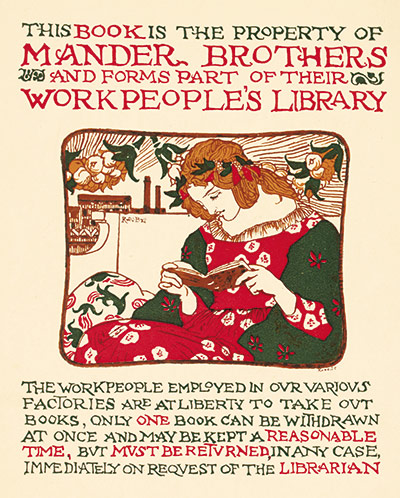
This was executed after Bell's design by Thomas Matthews Hare & Co, a firm of wood engravers long established in London. The plate was printed with inks made by Mander Brothers, a Wolverhampton varnish and chemical company. The library had been started by the firm in 1863 Photograph: Trustees of the British Museum
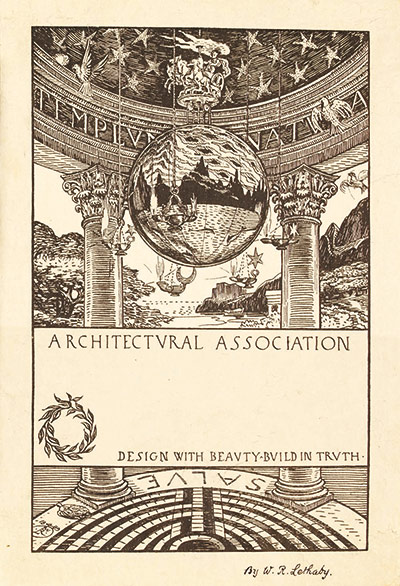
Lethaby, an architect, was commissioned to design this bookplate in the first year of the presidency of Leonard Stokes, who completely reorganized the Association. The design may have represented a concept for a new entrance to the library when the Association moved its London premises in 1891 from Conduit Street to Great Marlborough Street Photograph: Trustees of the British Museum
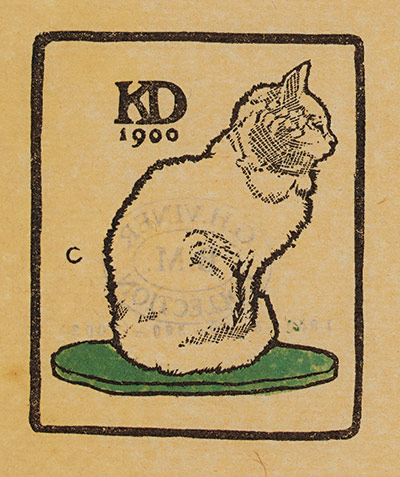
The kitten provides a punning subject for this bookplate for the wife of the antiquarian bookseller and publisher William Downing (1844-1910), who ran the Chaucer Head Bookshop in Birmingham from 1870 Photograph: Trustees of the British Museum
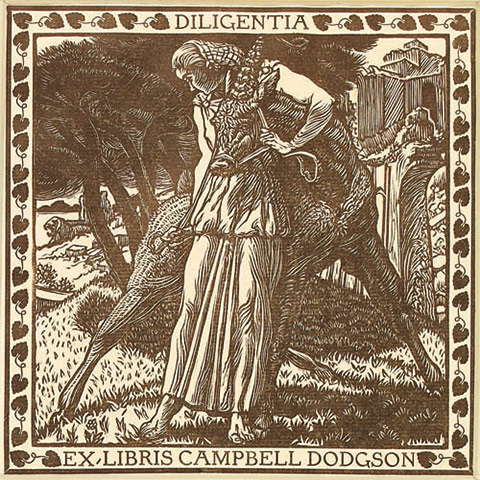
Dodgson joined the staff of the British Museum's Department of Prints and Drawings in 1893, and served as its Keeper from 1912 to 1932. During his time there he was responsible for considerably enhancing the Museum's collection of bookplates. it is likely that the unicorn was chosen by Dodgson, as it also appears in another bookplate made for him by the Australian artist Lionel Lindsay Photograph: Trustees of the British Museum
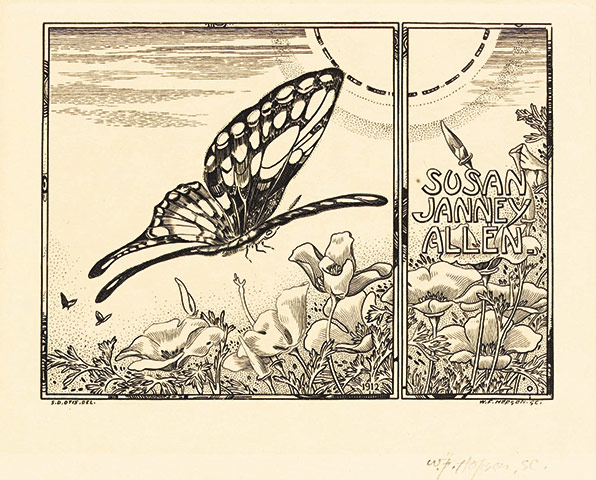
Susan Janney Allen lived at Moorestown, New Jersey, and was a member of the Ex Libris Society from 1913. Hopson based this beautiful print on a drawing by Samuel Davis Otis Photograph: Trustees of the British Museum
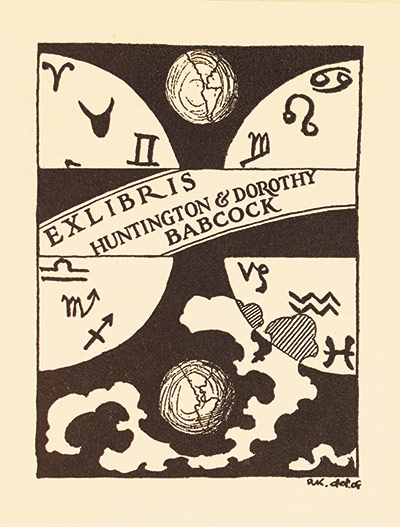
Dorothy Doubleday was the daughter of Kipling's New York publisher, Frank Nelson Doubleday. The novelist made the first design of this astrological bookplate for her before she became engaged to Huntington Babcock in 1914. When she married, Kipling altered the names on his composition and made this second version when on board the SS Lusitania with the young couple. The two globes refer to Dorothy's maiden name. The significance of the signs of the zodiac is yet to be determined Photograph: Trustees of the British Museum
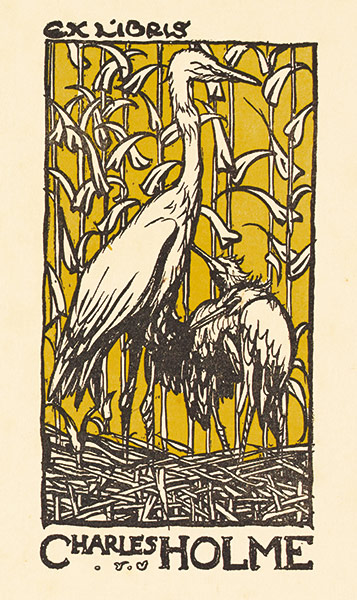
Holme was the founding editor of The Studio, a journal that frequently published articles about Brangwyn and illustrations of his work. The plate may be punning, 'holm' being a word used in the west country for 'small island'. The heron was one of the attributes of Athena, the Greek goddess of wisdom Photograph: Trustees of the British Museum
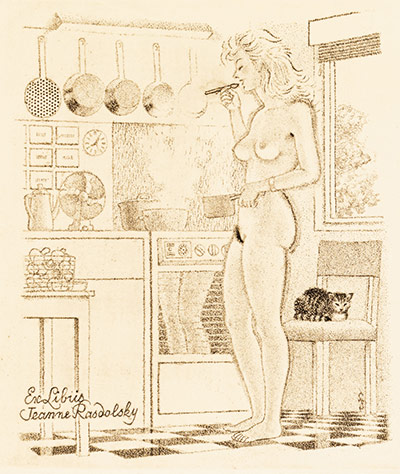
This is one of two bookplates that the Belgian artist made for his fellow countrywoman Jeanne Radolsky, a passionate collector of ex libris. Photograph: Trustees of the British Museum







